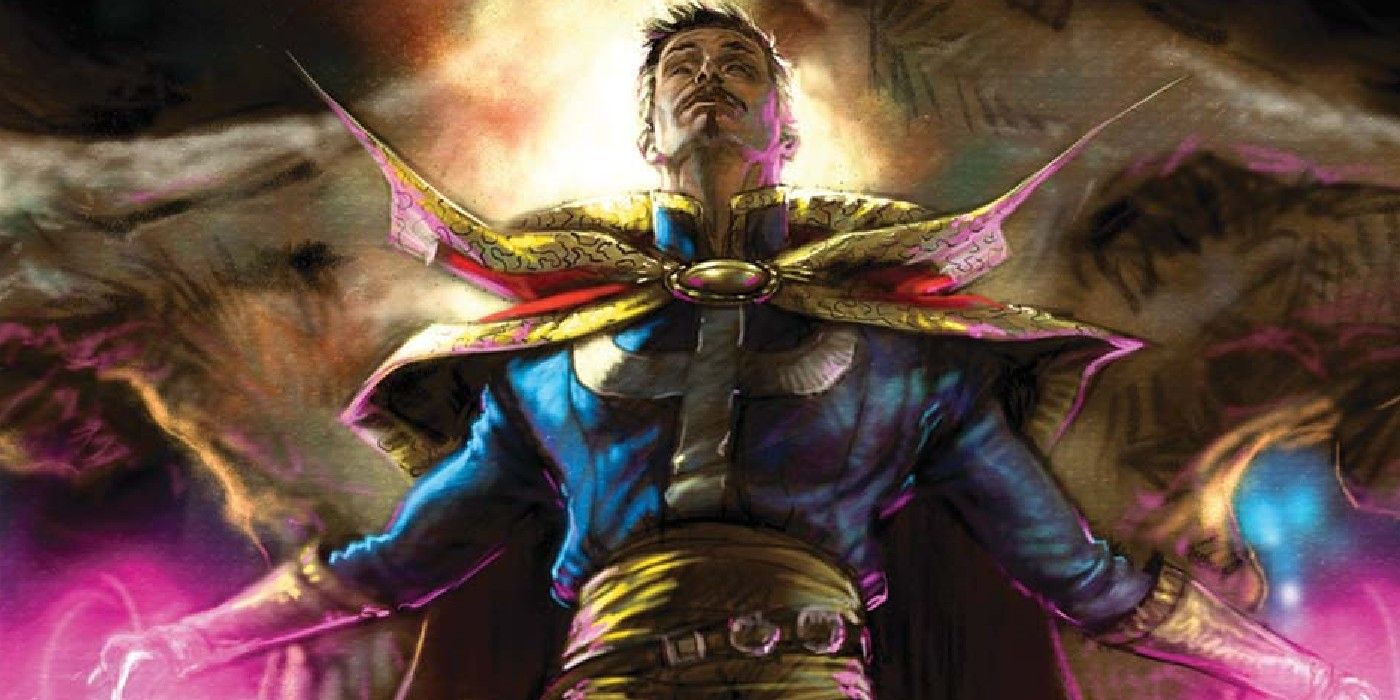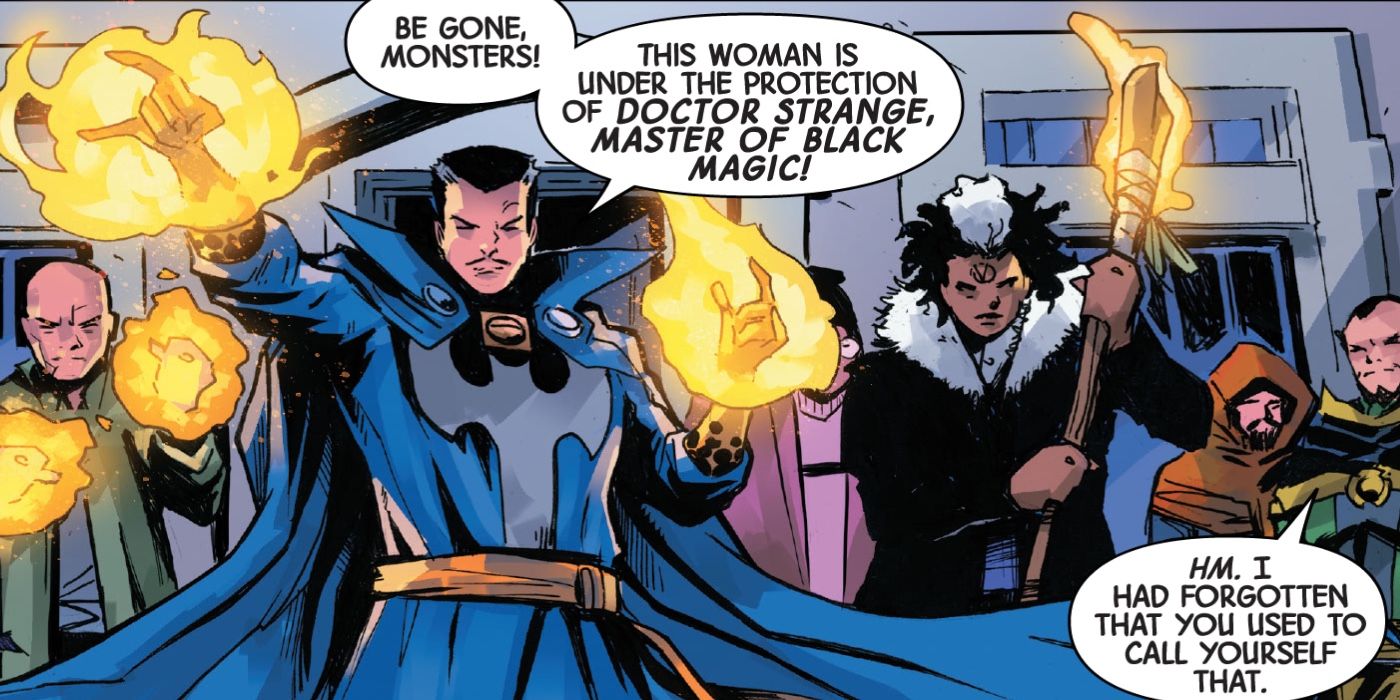Warning: contains spoilers for The Death of Doctor Strange #2
The first issue of The Death of Doctor Strange saw the Sorcerer Supreme murdered by unknown assailants, and a Doctor Strange from the past come to the present day to solve the puzzling case of his own death. The presence of the younger Strange provides a fascinating glimpse into how the character has grown and changed in almost 60 years, and his original nickname gets a call out in The Death of Doctor Strange #2, on sale now in print and digital.
Created by Stan Lee and Steve Ditko, Doctor Strange first appeared in 1963’s Strange Tales #110 and has been a mainstay of the Marvel Universe since. As the Sorcerer Supreme, Doctor Strange fights mystical threats to Earth's plane of existence, but his reign came to an end in The Death of Doctor Strange #1, where he was seemingly murdered by persons unknown. Strange’s associates, such as Doctor Voodoo and Wong, have gathered to solve the case; Baron Mordo, one of Strange’s oldest enemies, arrives as well, angered that it was not he who dealt the death blow to Strange. To everyone’s surprise, Doctor Strange appears—but it is a younger version, from early in his career. This younger, fresher version of Doctor Strange was the present-day Strange’s backup in the case of his death, meant to tie up loose ends until the next Sorcerer Supreme can be chosen.
In the new issue, written by Jed MacKay, with art by Lee Garbett, colors by Antonio Fabela, and letters by Cory Petit, everyone is still in shock over the appearance of this seemingly younger version of Doctor Strange. His outfit is the classic blue and black ensemble, as opposed to the more vibrant, colorful outfit he chose later. The younger Doctor Strange also uses his classic catchphrases, such as “by the Hoary Hosts of Hoggoth.” When mysterious magical beings invade Strange’s Sanctum, looking for Clea, he warns them she is under the protection of “Doctor Strange, Master of Black Magic.” Mordo chuckles, saying he forgot that Strange used to call himself that.
Part of the appeal of The Death of Doctor Strange is watching Strange’s allies in the present interact with his younger self. Not only does it provide humor to break a tense story, it shows how much Doctor Strange has progressed since his first appearance. The silly catchphrases, a Stan Lee flourish, are long gone, as is the title “Master of Black Magic.” In traditional lore, black magic was evil, and it made no sense that good guy Doctor Strange would use it.
The Death of Doctor Strange is, despite the title, a celebration of the Sorcerer Supreme’s legacy, and his longstanding place in the Marvel Universe. The catchphrases and problematic titles are relics of a bygone era, but what has not changed is Doctor Strange’s devotion to justice and protecting innocents.


